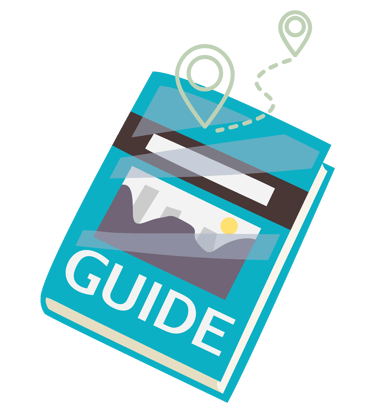14 Days Thailand: The Ultimate Tour Guide
This Guide gives you a good example how to plan your 14 days trip through Thailand during high season!
COUPLE TRIPSFAMILY VACATIONDIGITAL NOMADSSOLO TRAVELLERS
14 Days Thailand: Ultimate Tour Guide
Your journey starts with us!
Travel Period: Late November to early December
Duration: 14 Days
Ideal Weather: Dry season with temperatures ranging from 18 to 32 degrees Celsius




Arrival and Acclimation:
Day 1-3: Arrival in Bangkok
Day 1: Arrive at Suvarnabhumi Airport, Bangkok. Check into a centrally located hotel like Hotel Muse Bangkok for luxury or Lub d Bangkok Siam for budget options.
Day 2: Explore the Grand Palace, Wat Pho, and Wat Arun. Enjoy a river cruise on the Chao Phraya River in the evening.
Day 3: Visit Chatuchak Weekend Market for shopping, then explore the bustling nightlife in areas like Khao San Road or Thonglor.


Cultural Exploration:
Day 4-6: Chiang Mai
Day 4: Fly to Chiang Mai (1-hour flight). Check into a hotel like Ping Nakara Boutique Hotel or Green Tiger House for budget.
Day 5: Visit Doi Suthep Temple and the nearby Bhubing Palace. Spend the afternoon at the Elephant Nature Park.
Day 6: Explore the Old City, visit various temples like Wat Chedi Luang, and enjoy a traditional Thai cooking class in the evening.


Relaxation and Nature:
Day 7-9: Pai
Day 7: Take a bus or private car to Pai (3-hour drive). Check into a charming guesthouse like Pai Village Boutique Resort.
Day 8: Visit the Pai Canyon, the Land Split, and soak in the Tha Pai Hot Springs.
Day 9: Take a leisurely bike ride through the countryside, visit local farms, and enjoy the laid-back atmosphere.


Beach and Adventure:
Day 10-12: Krabi & Surrounding Islands
Day 10: Fly to Krabi (via Bangkok). Check into Rayavadee Resort or a budget-friendly option like Pak-Up Hostel.
Day 11: Take a day trip to Phi Phi Islands, snorkel in the crystal-clear waters, and relax on the beaches.
Day 12: Explore Railay Beach, try rock climbing, and visit the Phra Nang Cave Beach.


Island Life and Departure:
Day 13-14: Phuket
Day 13: Travel to Phuket by ferry or a short flight. Check into The Surin Phuket or Lub d Phuket Patong for budget.
Day 14: Spend the day at Patong Beach, explore the Phuket Old Town, and enjoy a farewell dinner at a beachside restaurant. Depart from Phuket International Airport.


Travel Tips
Flights: Book domestic flights in advance to save on costs. Airlines like Thai Airways, Bangkok Airways, and AirAsia offer frequent connections between major destinations.
Accommodation: Book accommodations that offer free cancellations to stay flexible.
Local Transport: Use a combination of flights, buses, and ferries to get around. Renting a scooter in smaller towns like Pai can be a fun and convenient way to explore.
Health and Safety: Ensure you have travel insurance. Stay hydrated and use sunscreen to protect against the sun.
Cultural Sensitivity: Dress modestly when visiting temples. Learn a few basic Thai phrases to enhance your travel experience.


Good to know!
Due to the weather, tourist numbers are significantly lower during the off-season. This leads to lower prices for flights and accommodations. Travelers who don't mind the heat and occasional rain can benefit from these savings.


Peak Season in Thailand - November to February
The months from November to February are considered the best time to visit Thailand. The weather is dry and pleasant during this period, with temperatures ranging between 18 and 32 degrees Celsius. Humidity is low, and the days are mostly sunny, providing ideal conditions for beach visits and outdoor activities.
Highlights & Events
Loi Krathong: This colorful festival of lights takes place in November and is one of the most beautiful festivals in Thailand.
New Year's Festival (Songkran): In April, the Thai New Year is celebrated with water fights across the country.
Here you find 7 Highlights for your Thailand Trip during peak season!
During the shoulder season, prices for accommodations and flights are often lower. Tourist numbers are fewer, providing a quieter and more relaxing travel experience.


Shoulder Season
Off-Season
September - October
April - May & July - September
Weather and Climate: September and October mark the end of the rainy season. The rain gradually decreases, and temperatures begin to fall. This period offers a good balance between pleasant weather and lower tourist numbers.
Highlights and Events:
Vegetarian Festival: Celebrated mainly in Phuket, this festival is known for its spectacular and sometimes shocking rituals.
Tourism: During the shoulder season, prices for accommodations and flights are often lower. Tourist numbers are fewer, providing a quieter and more relaxing travel experience.
Weather and Climate: The off-season in Thailand is characterized by high temperatures and heavy rainfall. April and May are the hottest months, with temperatures reaching up to 34 degrees Celsius. The monsoon season begins in July and lasts until October.
Highlights and Events:
Songkran: The Thai New Year festival in April is a must-see despite the heat.
Off-Season Adventures: The off-season offers the opportunity to experience Thailand's attractions without the crowds.
Thailand covers a large area, and the weather can vary depending on the region. Here are some regional specifics:
Bangkok and Central Thailand:
Dry season: November to February
Hot season: March to June
Rainy season: July to October
Northern Thailand (Chiang Mai, Chiang Rai):
Cool season: November to February
Hot season: March to May
Rainy season: June to October
Southern Thailand (Phuket, Krabi, Koh Samui):
West Coast (Phuket, Krabi): Best time to visit is from November to March
East Coast (Koh Samui, Koh Phangan): Best time to visit is from January to September
Regional Differences










